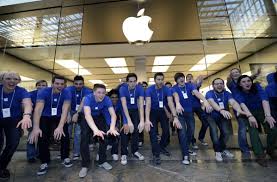Two relatively recent formal functions within businesses are those of customer engagement and customer success. Clearly not new as in we’ve not been focusing on success or engagement before but in that it wasn’t someone’s job title or sole function.

Or was it? Customer success and customer engagement have clearly been critical to businesses, since commerce first came about and it’s always been – or should be – part of everyone’s job and the function of every department. But what has changed is that a need has been identified to have individuals and teams who focus just on success and engagement, particularly from a leadership perspective – and ensure all other teams are working in a customer focused joined up and collaborative way, that results in the best experience and service for our customers! All great to have.
There’s a great blog post from last month that looks at the role of someone heading up the customer success function from Dan Steinman (Chief Customer Officer at gainsight). Dan highlights the key traits that are needed for a successful customer success leader and does so by asking his team about him in his role – a very interesting and insightful exercise.
Do read Dan’s post for full details but in summary the key traits are:
- A passion for customers.
- A willingness to get their hands dirty.
- A philosophy.
- An understanding of what the customer success team do each day.
- A knack for influence management.

Passion makes perfect sense. You need to have be focused on the customer and making things right for them and caring about them being successful. And your team need to share the same passion – and then let it spread beyond just your team! It can be a cultural shift but a critical one.
Getting involved when there are customer issues and challenges, means getting stuck in and doing what is needed and engaging with the customer and team. And not just taking a back seat overseeing it all. It’s about credibility.
As a new field, it is evolving fast and there are lots of new ideas. You need to be committed to what your phillosophy on customer success is and what that means for your customers and your teams.
The better you know your team and what they are doing, the better informed your decisions are – not rocket science, but all about good leadership.
The last point is the big one I think – influence management. You need to be working across all the functions and teams in your company so that they understand their roles in customer success – from sales to operations to development to product management to admin to support – so they can understand what and when changes are needed and implement them.
As an evolving new function, there is no commonly agreed standard definition of what customer success (or engagement) management is. Having a team focused on customer success, has a strong message for both internal teams and stakeholders and customers.

As technology moves more and more to a utility based – pay as you go – model and more focus is on long term relationships and not the legacy models where there was a huge upfront cost (as CAPEX – capital expenditure), customer retention becomes more critical. This is where customer success and customer engagement both come in – ensuring customers are retained. And key to this is ensuring customers can easily see the commercial value of the platforms and services you are providing.
These new technology models, have created a need to formalise and structure the customer success function, but it’s not just in technology companies where it applies.
The more value your services provide, the more successful your customers are and the more successful you are. Customer success can be the focus of your VP of customer success, or your chief customer officer, or your customer success director, but their role is to make sure everyone understands what customer success is all about and everyone’s own role in it, and to make your customers successful.















